FOOD3001 Starch and Protein Functions in Food Processing
1/89
There's no tags or description
Looks like no tags are added yet.
Name | Mastery | Learn | Test | Matching | Spaced |
|---|
No study sessions yet.
90 Terms
What happens to gelatinised starch as it cools?
Hydrogen bonds continue to form between amylose molecules, leading to the tendency to reform into crystalline regions.
What texture is caused by retrogradation of starch?
A characteristic gritty, harsh texture.
How does the ratio of amylose to amylopectin affect starch?
It influences the tendency of starch to retrograde.
What are waxy starches characterized by?
They have less amylose and a lower tendency to retrograde.
How do stabilized starches prevent retrogradation?
By adding functional groups that prevent amylose from realigning.
What is resistant starch?
Starch that resists digestion in the small intestine and promotes healthy gut function.
What types of fermentation are favored by resistant starch?
Fermentation of acetate, propionate, and butyrate.
What is one source of resistant starch?
The retrogradation of starch once foods are cooled.
What is the effect of HiMaize flour on dietary fiber?
It increases fiber content through increased resistant starch.

What is gelatinization in starch?
The process of breaking intermolecular bonds within the starch granule, allowing hydrogen bonding with water.
What can high amylose content in starch lead to?
Gelation and water expulsion, which can cause staling and syneresis.
What are some functions of starch in food?
Satiety, thickening, binding, adhesion, moisture absorptivity, and texture control.
Why are starches modified in food processing?
To enhance food function, increase resistance to heat, acid, and shear stress, and alter gelatinization properties.
What is one method of modifying starch?
Cross-linking to strengthen granule structure.
What does Dextrose Equivalent (DE) measure?
The degree of hydrolysis of starch, ranging from pure starch (DE0) to pure dextrose (DE100).

What are dextrins and maltodextrins?
Products with DE values between 5-20, used for bulk, viscosity, and texture stabilization.
What is the role of proteins in food?
They provide structure and texture, act as clarifying agents, aid leavening, emulsify, and contribute to flavor and color.
What is a key function of albumin in food processing?
It coagulates at 70°C, serving as a clarifying agent.
How does protein contribute to the Maillard reaction?
It influences flavor and color development during cooking.
What is the significance of muscle structure in meat and seafood processing?
It affects the texture and quality of the final product.
What are some examples of important protein functions in food?
Binding, thickening, emulsifying, and flavor enhancement.
What is the effect of protein on foams in food?
Proteins aid in leavening and stabilizing foams.
What is the basic building block of proteins?
Amino acid.
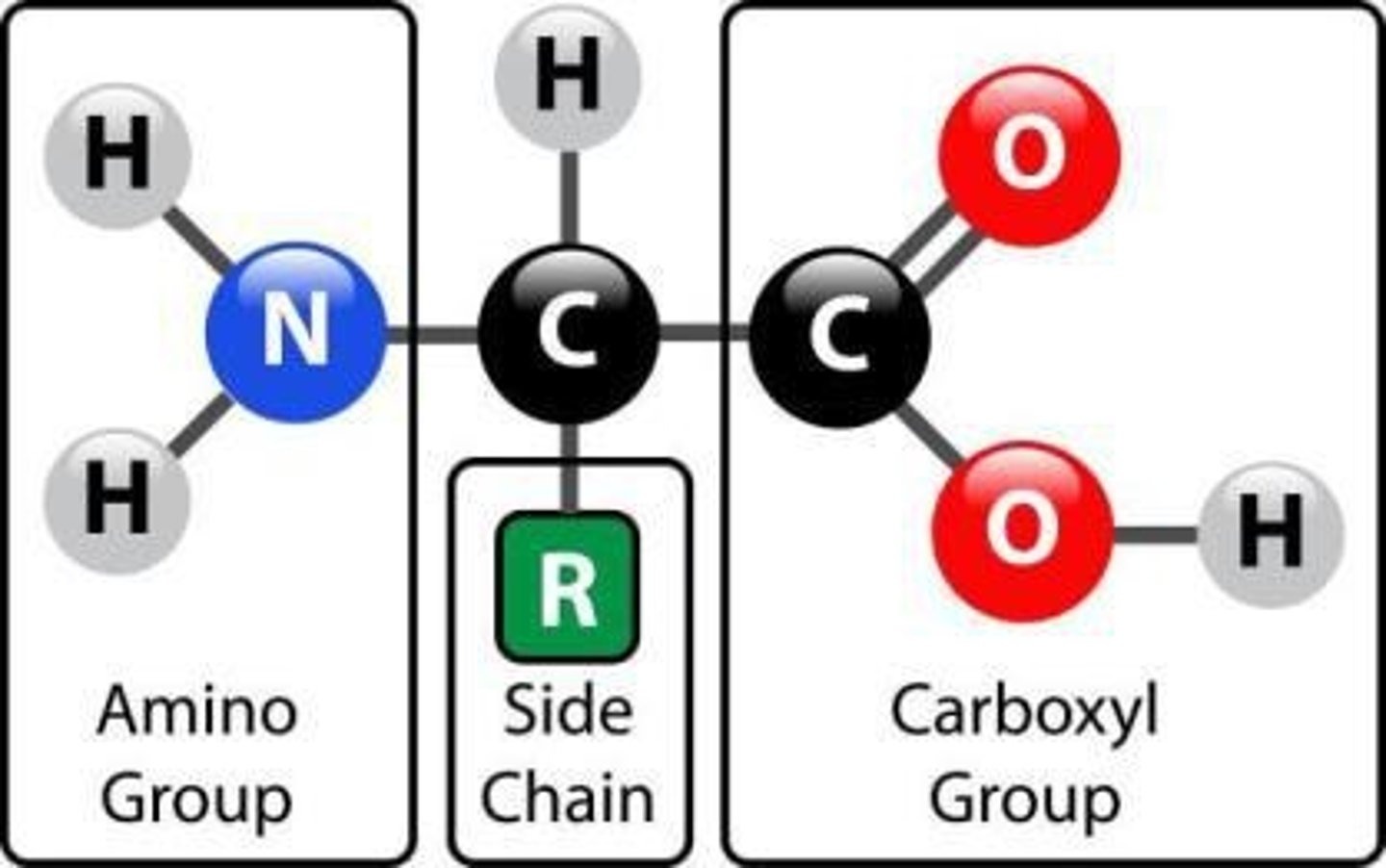
What is the sequence of protein formation from amino acids?
Amino acid → Peptide → Protein (more than 100 amino acids).
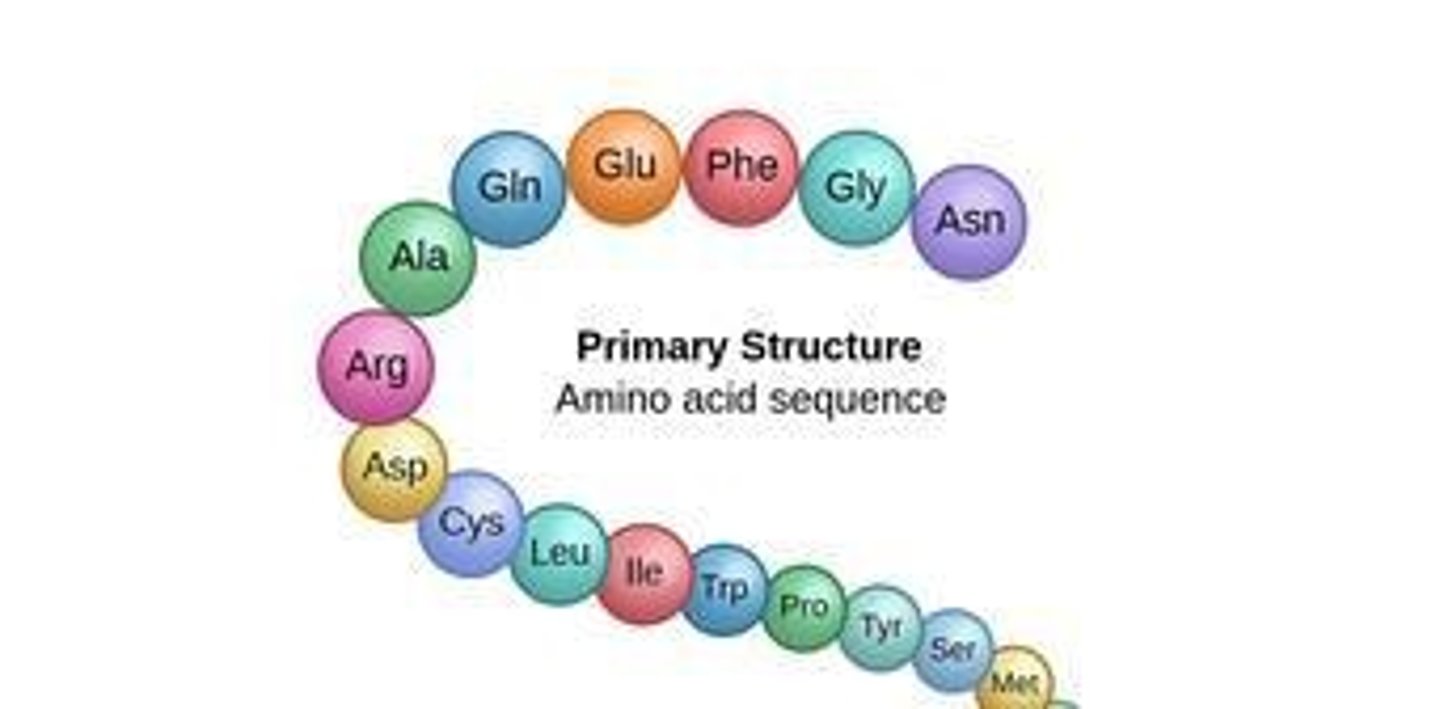
What factors do protein side chains affect?
Folding, solubility, gelation, isoelectric points, etc.
What is denaturation in proteins?
A reversible or irreversible change of conformation caused by destabilized intermolecular bonding due to factors like temperature, pH, salts, solvents, and shear.
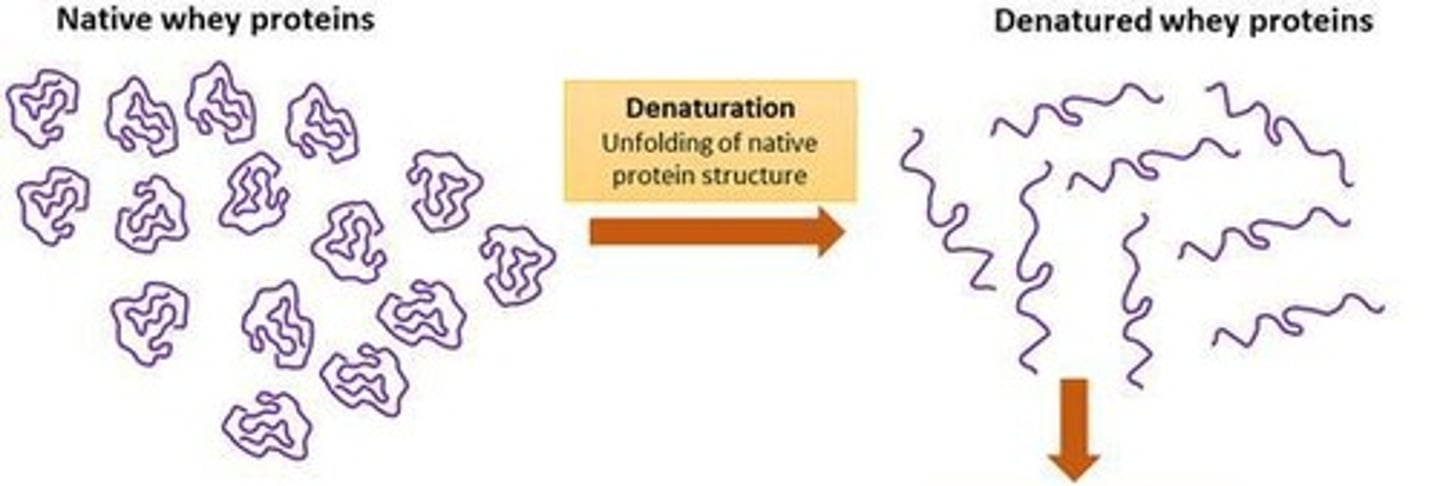
What indicates irreversible denaturation?
When a new stable form is formed or new bonds are created.
What is aggregation in proteins?
Intermolecular bonding between protein units.
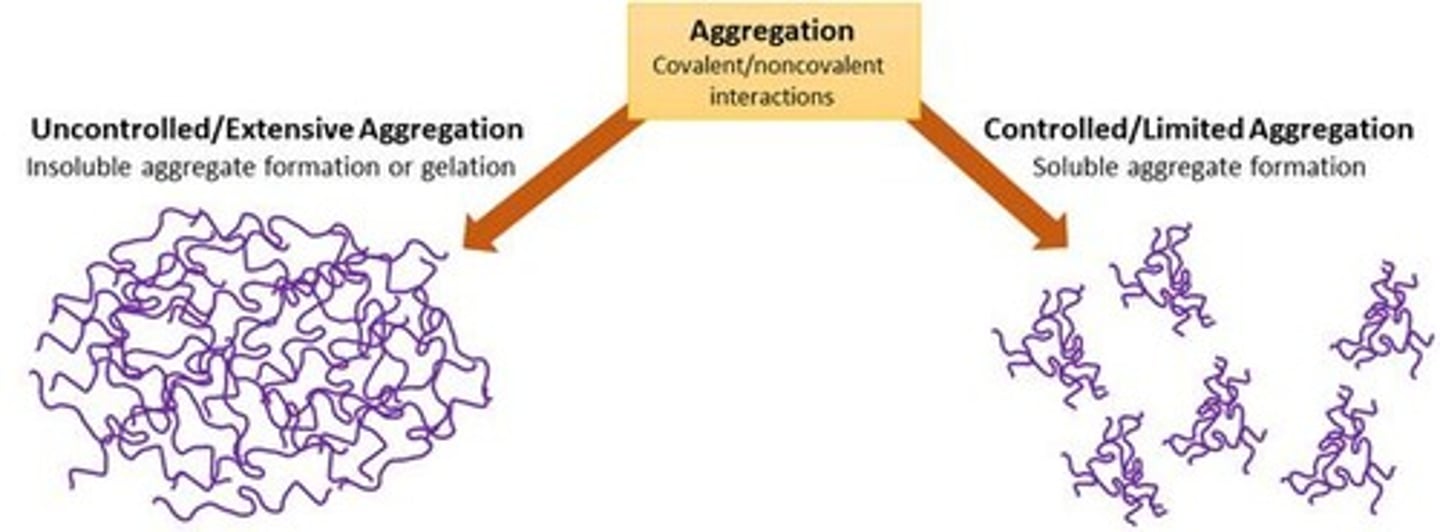
What types of bonds can denaturation break?
Di-sulphide, hydrophobic, charge-based effects, and enzymatic bonds.
What new bonds can form during protein crosslinking?
Electrostatic, hydrogen, di-sulphide, hydrophobic, dipole-dipole, and enzymatic breaks in peptide linkages.
List some functions of proteins in food.
Structure and texture, clarifying agents, aid in leavening, emulsifying, flavor, and color.
What are the main components of cow's milk?
13% solids (3.5% fat and 8.5% non-fat milk solids) and 87% water.
What are the three types of milk proteins?
Caseinates, lactoglobulins, and whey proteins.
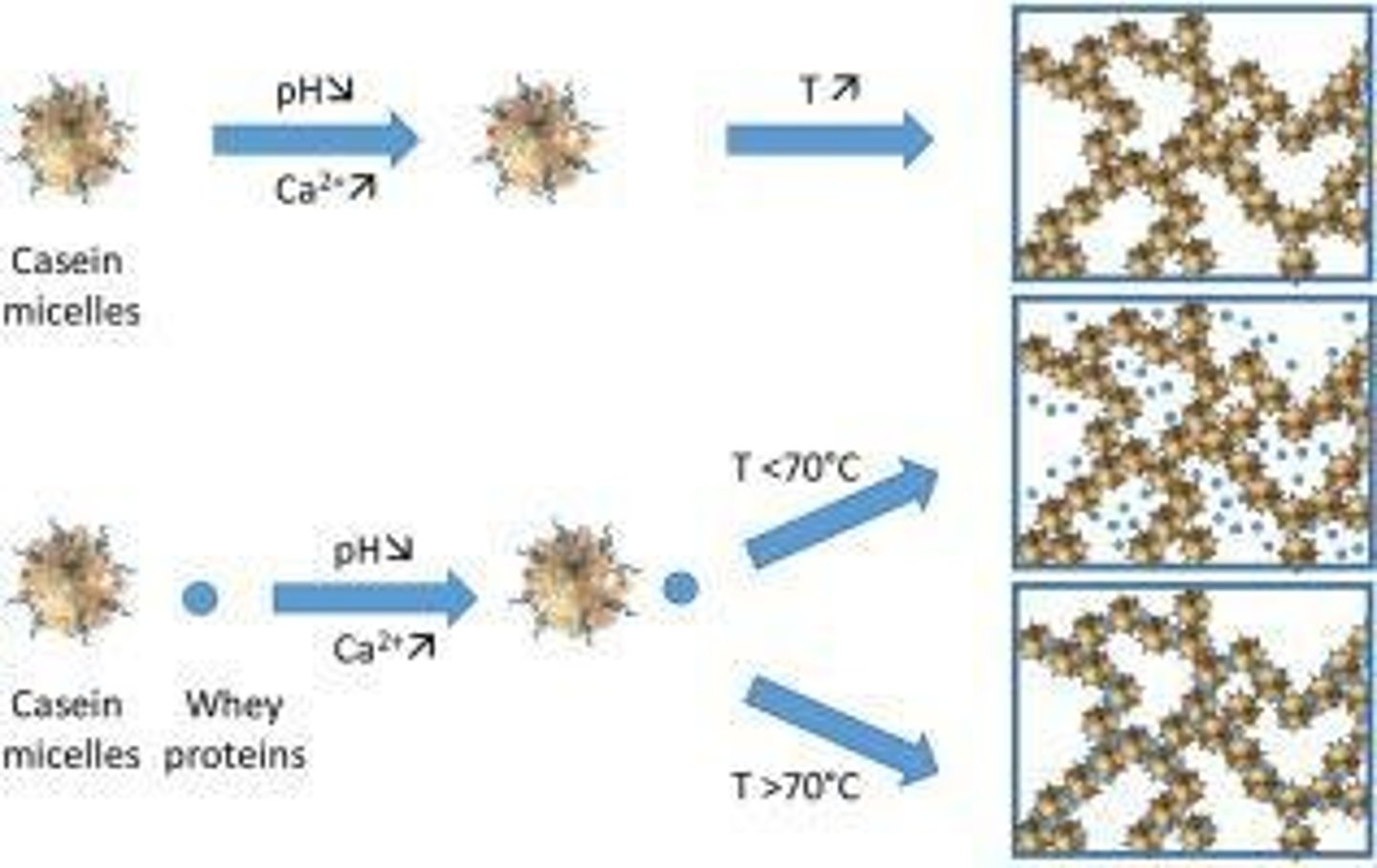
What role do lactoglobulins play in milk?
They are one of the main types of milk proteins that contribute to texture and function.
What happens to egg albumin when it is beaten?
It forms a visco-elastic film that can trap air bubbles, increasing volume.
What are the minimum pasteurization standards for egg products under the Food Standards Code?
Specific standards are outlined in Standard 4.2.4, Division 4.
What is the difference between homogenization and pasteurization?
Homogenization breaks down fat globules to prevent separation, while pasteurization heats milk to kill pathogens.
Why is pasteurization important for commercial milk?
To ensure safety by eliminating harmful bacteria.
What is the Maillard reaction?
A chemical reaction between amino acids and reducing sugars that gives browned foods their distinctive flavor.
What is the impact of freezing on pure egg yolk?
Freezing can cause changes in texture and functionality due to ice crystal formation.
What is a potential issue associated with egg dehydration?
It can lead to undesirable changes in flavor and texture.
What is the role of monosodium L-glutamic acid in flavor development?
It enhances umami flavor and can contribute to overall flavor complexity.
What is syneresis in relation to protein networks?
The expulsion of liquid from a gel, which can occur during curd cutting and pressing.
What are some applications of plant proteins similar to animal proteins?
They can also be used for structure, texture, emulsifying, and flavoring in food products.
What is the significance of the milk fat globule membrane?
It contains phospholipids and proteins that stabilize fat globules in milk.
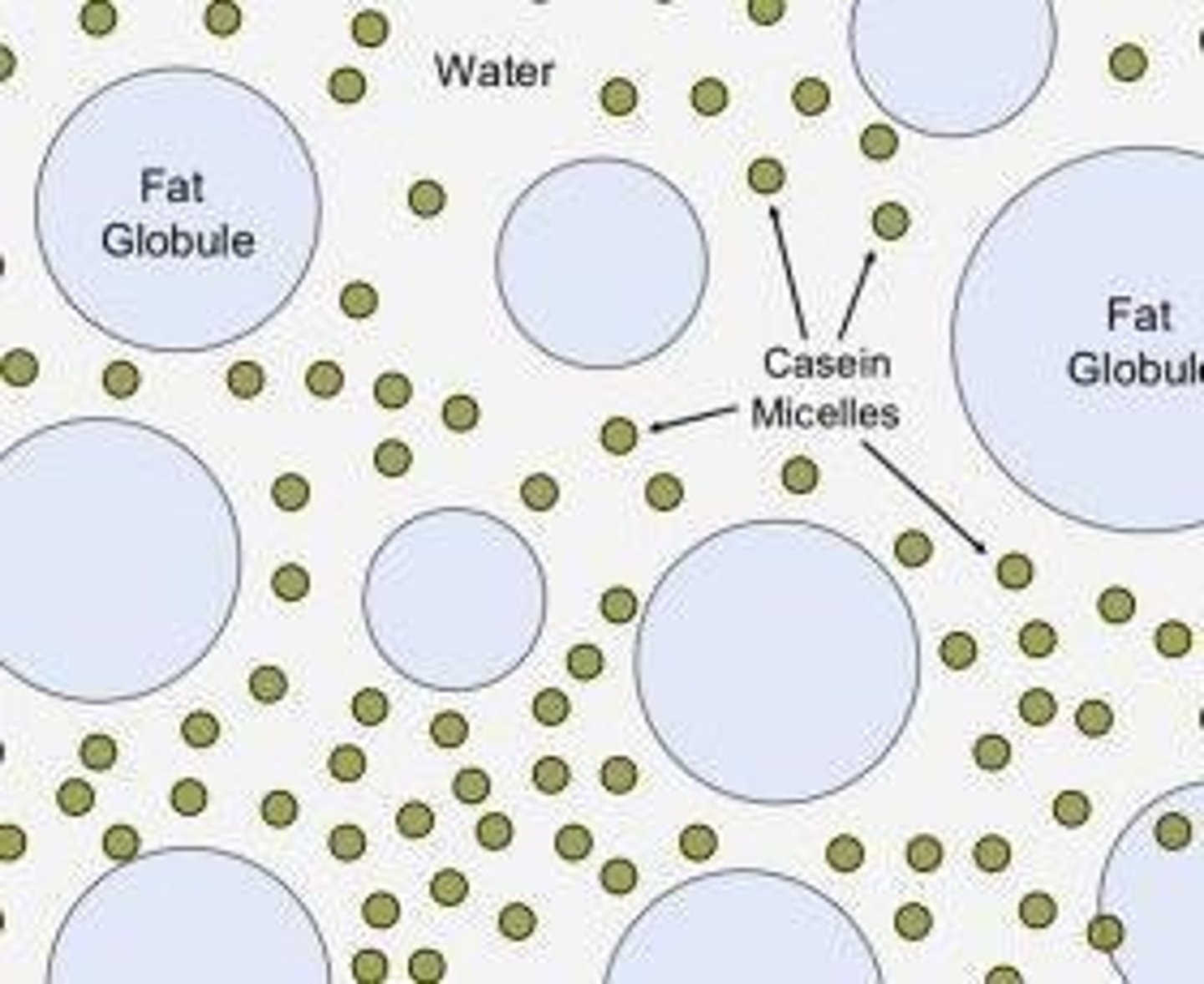
What was Australia's per capita consumption of poultry, pork, sheep, and beef in 2019?
89.7 kg, compared to a global average of 35 kg.
What are some sources of protein mentioned in the notes?
Nuts and seeds (5-25%), Whey Protein Isolates (~90%), Eggs (~15%), Milk & Dairy (4-25%), Grains (5-15%), Seaweeds and Algae (5-50%), Pulses, Beans, Legumes (~5-20%).
What is the Total Allowable Catch (TAC)?
A sustainable catch amount for a specific species or stock within a fishing season.
What does the Total Allowable Effort (TAE) refer to?
The sustainable amount of fishing gear (hooks, nets, traps) that can be used.
What is an Individual Transferable Quota (ITC)?
An allocated percentage of the TAC or TAE based on the amount of quota owned.
Which authority regulates fishing practices in Australia?
The Australian Fisheries Management Authority (AFMA).
What is required to fish in Australia, even recreationally?
A fishing license.
What is the purpose of the AFMA website?
To provide information on fisheries management, compliance regulations, and how to report illegal fishing.
What is the first method of wild catch harvesting mentioned?
Hand Collection, used for aquarium species, lobster, sea cucumbers, and abalone.
What is the purpose of using minor/automated handlines in fishing?
To achieve lower volume catch while being more selective, allowing for by-catch release.
What type of fish is typically caught using droplines?
Near sea floor dwellers such as trevalla, ling, and perch.
What fishing method involves long lines that can extend several kilometers?
Longlining.
What is squid jigging?
A method that uses lines with lures that are jiggled to attract squid.
What is the purpose of a purse seine in fishing?
To catch fish using nets that encircle schools of fish; Fish Aggregating Devices are not allowed in Australia.
What is the Danish seine method used for?
To catch ocean floor species.
What is trawling?
A method that uses funnel nets towed behind a boat to catch fish.
How does gillnetting work?
It uses tight diamond mesh to entangle the gills and fins of fish such as gummy sharks and elephant fish.
What is the Western Australia Rock Lobster Fishery known for?
It is a single species fishery valued at $600 million, accounting for about 20% of the total value.
What are the steps involved in processing lobsters for export?
1. Grading on size, 2. Quality grading, 3. Purging in tanks, 4. Packing for transport.
What is the purpose of purging lobsters before export?
To slow their metabolism and ensure they are in a sedated state for transport.
What factors influence the quality and value of meat?
Color, fat distribution, texture, ethical considerations, type of cut, and connective tissue.
What role do myofibrils play in muscle contraction?
They are the structural units within muscle fibers that facilitate contraction.
What are the two types of filaments found in myofibrils?
Thick filaments consist of myosin, and thin filaments consist of actin.
What is the basic contracting unit of a myofibril?
The sarcomere.
What is the role of the troponin-tropomyosin complex in muscle contraction?
It controls the binding sites on actin, which are covered by tropomyosin.
What triggers the exposure of myosin binding sites on actin filaments?
Calcium release by the sarcoplasmic reticulum.
What is required for the myosin arm to detach from actin during muscle contraction?
A new molecule of ATP.
How many ATP are produced through anaerobic respiration per glucose molecule?
2 ATP.
How many ATP are produced through aerobic respiration per glucose molecule?
Approximately 36 ATP.
What happens to muscle cells post-slaughter regarding ATP supply?
They lose their constant oxygen supply and continue to generate ATP via anaerobic respiration.
What causes the pH of muscle cells to drop post-slaughter?
The buildup of lactic acid from anaerobic respiration.
What is rigor mortis and when does it occur?
It is the locking of the actomyosin complex due to exhausted ATP supply, occurring after anaerobic respiration stops.
How does rigor mortis affect meat toughness?
It creates a stronger actin-myosin complex and shorter sarcomere length, resulting in tougher meat.
What is the final pH of rigor mortis in fish compared to land animals?
Fish have a higher final pH (~6.3) than land meat (~5.6).
What factors contribute to the shorter shelf-life of fish compared to land meat?
Higher final pH, lower optimum temperature for enzymes, and bacterial activity.
What is myoglobin and what factors affect its concentration?
Myoglobin is the main color determinant in well-bled meat, affected by muscle type, animal species, age, and gender.
What are the three states of myoglobin?
Deoxymyoglobin, oxymyoglobin, and metmyoglobin.
What are the types of fat deposition in meat?
Abdominal (visceral), subcutaneous, inter-muscular, and intra-muscular (marbling).
What is the significance of marbling in meat quality?
Marbling is prized in certain markets like Korea, Japan, the US, and Australia.
What is the impact of rapid cooling on rigor mortis?
It makes the sarcoplasmic reticulum less efficient at sequestering calcium, leading to a stronger actin-myosin complex.
What are some methods to minimize meat toughness?
Using proteases, meat tenderizers, cutting against the grain, aging, silver skin removal, and scoring.
What is the relationship between sarcomere length and meat toughness?
Shorter sarcomere length at rigor mortis creates tougher meat.
What are the processing factors that impact meat texture?
Factors include fat distribution, marbling, and handling practices.
Why is low-stress handling important in meat processing?
It helps maintain myosin's water binding capacity and affects meat quality.
What happens to proteolytic enzymes post-slaughter?
They break down protein, leading to a decrease in rigor effects.